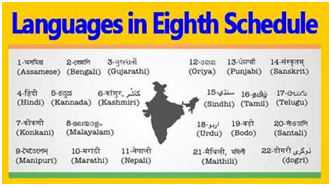Hindi imposition and its discontents
What is the backdrop to the Hindi imposition row?
- The origin of the linguistic row goes back to the debate on official languages. In the Constituent Assembly, Hindi was voted as the official language by a single vote.
- However, it added that English would continue to be used as an associate official language for 15 years. The Official Languages Act came into effect on the expiry of this 15-year period in 1965.
- This was the background in which the anti-Hindi agitation took place. However, as early as in 1959, Jawaharlal Nehru had given an assurance in Parliament that English would continue to be in use as long as non-Hindi speaking people wanted it.
Why do many parties in Tamil Nadu stand against the recommendation?
- In August 1937, in the then Presidency of Madras, Rajaji or CR, decided to make Hindi compulsory in secondary schools. E.V. Ramasamy, or Periyar had spearheaded an agitation against the move, marking the first such stir.
- In January 1965, the second round of agitations erupted in the wake of Hindi becoming the official language of the Union government coupled with the approach adopted by the Central government towards the whole issue.
- The essence of the Official Languages Act, 1963, is to provide something to each of the differing groups to meet its objections and safeguard its position.
- Whenever the parties in the State see any attempt to disturb this status quo, their reaction is always uniform — a virulent opposition.
| The Eighth Schedule
● The Eighth Schedule to the Constitution of India lists the official languages of the Republic of India. ● Indian Constitution deals with the official languages in Articles 343 to 351. ● The Constitutional provisions relating to the Eighth Schedule occur in articles 344(1) and 351 of the Constitution. ● Article 344(1): It provides for the constitution of an official language Commission by the President, which shall consist of a Chairman and such other members representing the different languages specified in the Eighth Schedule to make recommendations to the President for the progressive use of Hindi for official purposes of the Union. ● Article 345: Official language or languages of a State subject to the provisions of Article 346 and 347. ● It would thus appear that the Eighth Schedule was intended to promote the progressive use of Hindi and for the enrichment and promotion of that language. ● Article 351: It provides for enriching the Hindi language by assimilating in it the forms, style and expressions used in the languages specified in the Eighth Schedule so that it may serve as a medium of expression for all the elements of the composite culture of India. ● The eighth schedule includes the recognition of the following 22 languages: ○ Assamese, Bengali, Gujarati, Hindi, Kannada, Kashmiri, Konkani, Malayalam, Manipuri, Marathi, Nepali, Odia, Punjabi, Sanskrit, Sindhi, Tamil, Telugu, Urdu, Bodo, Santhali, Maithili and Dogri are the 22 languages presently in the eighth schedule to the Constitution. |
| Practice Question
1. What are the constitutional provisions related to language?
|




